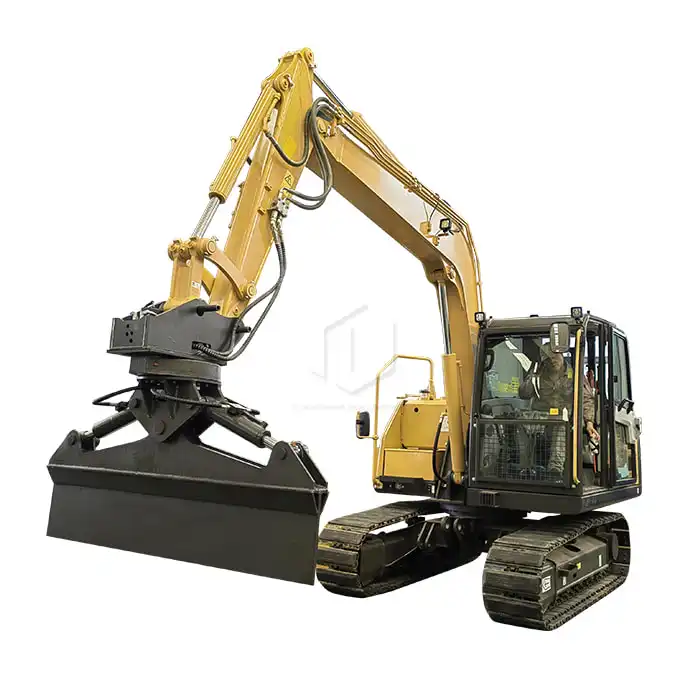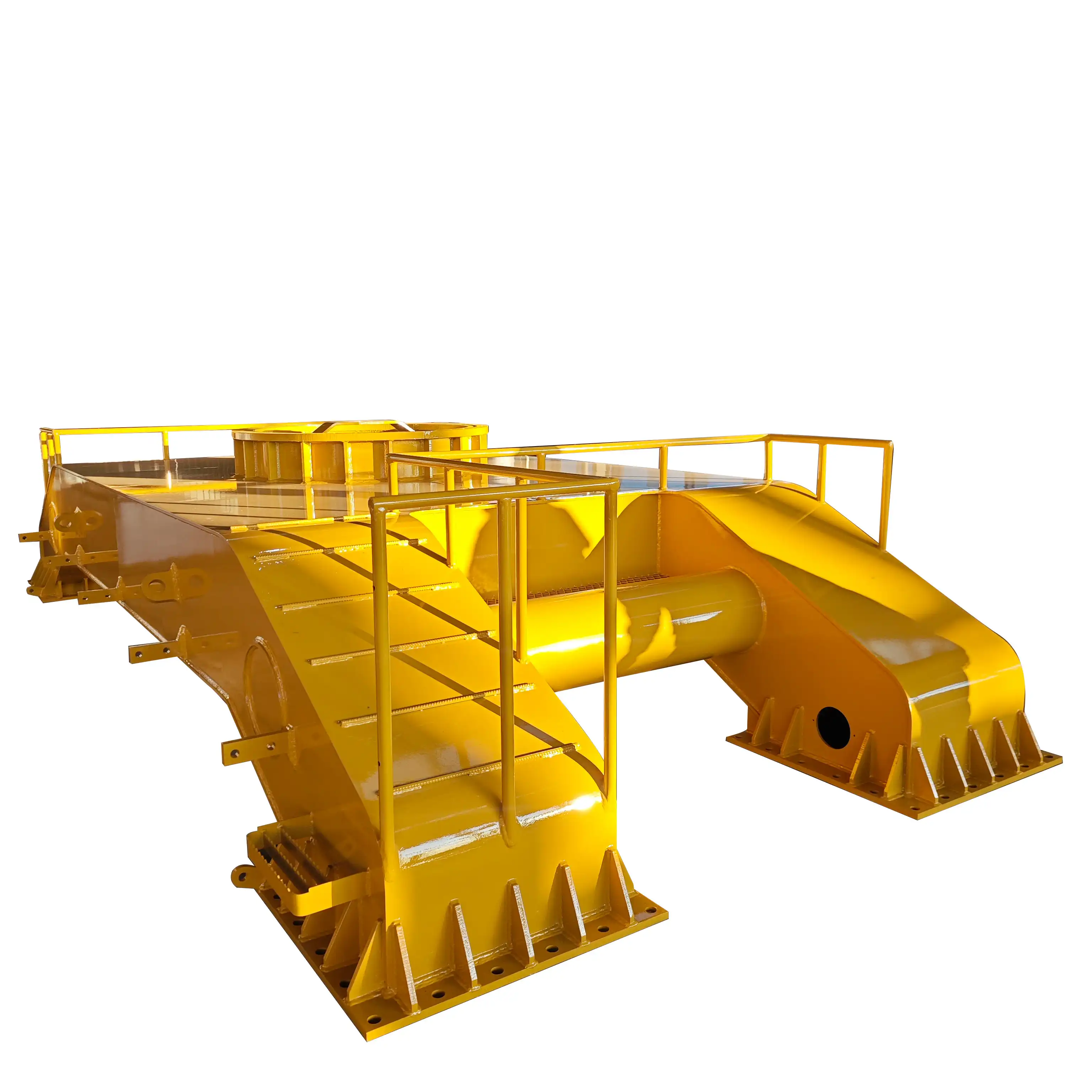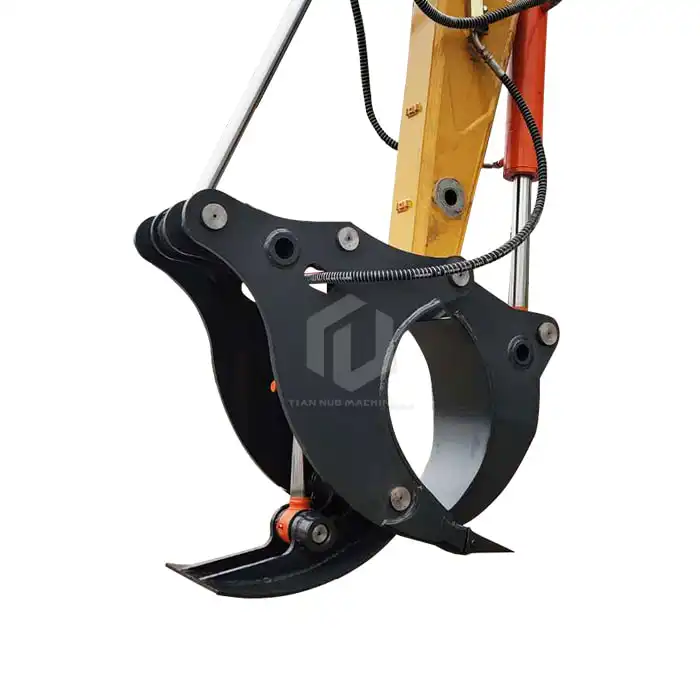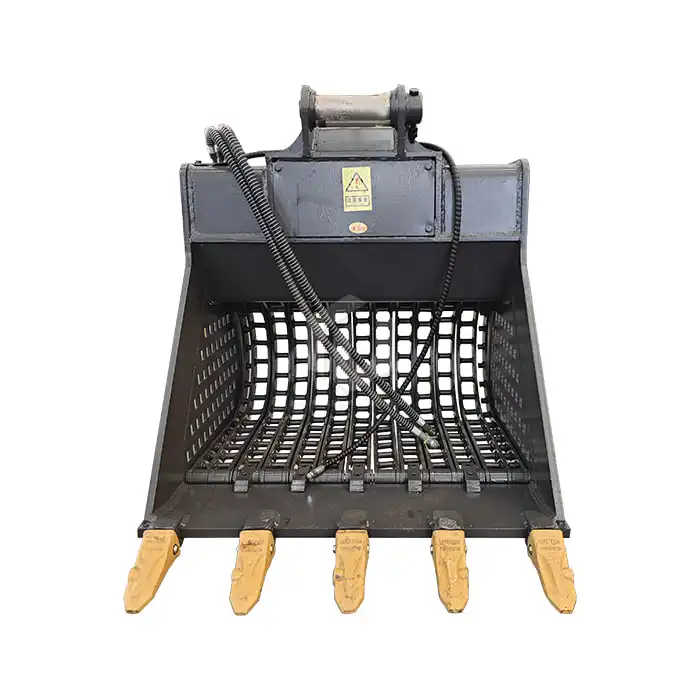How much does an excavator bucket weigh?
When it comes to construction, mining, or any heavy-duty earth-moving operation, the excavator bucket is an indispensable tool. One of the most common questions professionals in these industries ask is, "How much does a bucket weigh?" Its weight can vary significantly based on its size, capacity, and type. Generally, buckets weigh between 100 kg and 2000 kg. This range ensures they can handle tasks ranging from light digging to heavy-duty rock excavation.

What is the weight of an excavator bucket?
Factors Influencing Excavator Bucket Weight
The weight of an excavator bucket is influenced by various factors that contribute to its overall mass. These factors include:
1. Material composition: Buckets are typically made from high-strength steel alloys, with some incorporating wear-resistant materials like carbide for enhanced durability.
2. Bucket design: The shape and structural elements of the bucket, such as reinforcement ribs and teeth, affect its weight.
3. Attachment system: The method used to connect the bucket to the excavator arm can add to the overall weight.
Weight Range for Different Excavator Classes
Excavator buckets are available in a wide range of weights to suit different machine sizes and applications:
1. Mini excavators (1-6 tons): Buckets typically weigh between 100-500 pounds (45-225 kg).
2. Medium-sized excavators (7-25 tons): Bucket weights range from 500-3,000 pounds (225-1,360 kg).
3. Large excavators (26-40 tons): Buckets can weigh 3,000-10,000 pounds (1,360-4,535 kg).
4. Heavy-duty excavators (40+ tons): Bucket weights exceed 10,000 pounds (4,535 kg) and can reach up to 20,000 pounds (9,070 kg) or more for specialized applications.
Impact of Weight on Excavator Performance
The weight of an excavator bucket significantly impacts the machine's performance:
1. The weight of the bucket directly subtracts from the total lifting capacity of the excavator. Since each machine has a maximum lifting capability, a heavier bucket leaves less capacity for carrying materials. This can lead to reduced efficiency, requiring additional cycles to complete the same amount of work. Overloading the machine may also compromise safety by increasing the risk of tipping or hydraulic failure.
2. Fuel efficiency: A heavier bucket increases the excavator’s energy demand, leading to higher fuel consumption. More power is required to operate the boom, arm, and hydraulic system when handling a heavy load. This can significantly raise operating costs over time, particularly for long-duration projects. Using an appropriately sized bucket optimizes fuel efficiency and minimizes unnecessary strain on the engine.
3. Stability: The weight distribution of the bucket affects the excavator’s center of gravity, impacting its overall stability. When lifting a heavy load, especially when the arm is fully extended, there is an increased risk of the machine becoming unbalanced or tipping forward. Operators must account for this by adjusting their working angles and ensuring the excavator remains on stable ground. A counterweight may sometimes be required to maintain balance.
4. Wear and tear: Heavier buckets can accelerate wear on the excavator's components, such as bearings and hydraulic systems.
Depends On Size, Capacity, And Type
The weight of an excavator bucket is influenced by its size, capacity, and type. These factors are interconnected and play a crucial role in determining the bucket’s suitability for specific tasks. Understanding how these elements affect weight helps you make an informed decision when selecting a bucket for your excavator.
Size and Its Role in Weight Determination
The bucket physical dimensions, including its width and depth, directly impact its weight. Larger buckets require more material to construct, resulting in increased weight. For example, a bucket with a width of 2000 mm will weigh more than one with a width of 500 mm. Choosing the right size ensures your excavator can handle the bucket’s weight while maintaining efficiency. It’s also important to consider the depth of the bucket, as deeper buckets can hold more material but may also increase the overall weight. This is particularly important for tasks that require significant material handling, such as mining or large-scale construction projects.
Capacity and Its Influence on Weight
Capacity refers to the volume of material an excavator bucket can hold. Buckets with higher capacities are heavier due to the additional material required to construct them. For instance, a bucket with a capacity of 3.0 cubic meters will weigh more than one with a 1.0 cubic meter capacity. Selecting a bucket with the appropriate capacity ensures optimal performance without overburdening your equipment. It’s also important to consider the type of material being excavated, as denser materials may require a bucket with a lower capacity but higher strength. This ensures that the bucket can handle the specific demands of your project without compromising efficiency or safety.
Type and Its Effect on Weight
Different types of buckets are designed for specific tasks, and their weight varies accordingly. For example, a heavy-duty rock bucket is reinforced with additional materials to withstand tough conditions, making it heavier than a standard bucket. Understanding the type of bucket needed for your project ensures you choose one that meets your requirements without compromising performance. Other specialized buckets, such as those designed for material handling or demolition, may have unique features that affect their weight. For instance, material handling buckets often include reinforced structures and additional teeth to handle tough materials, making them heavier than standard buckets. Understanding the specific requirements of your project helps you select a bucket that balances weight and functionality.
Excavator Bucket Weight Chart
To help you understand the weight range of excavator buckets, here’s a general guide based on size and capacity:
| Small Buckets (0.1 - 0.5 Cubic Meters) | Small buckets are lightweight, typically weighing between 100 kg and 500 kg. They are ideal for tasks requiring precision and minimal material handling, such as landscaping or small-scale excavation. These buckets are often used with mini excavators and are designed to handle light materials like soil, sand, and gravel. Their compact size and lower weight make them easy to maneuver in tight spaces, ensuring efficient operation in confined areas. |
| Medium Buckets (0.5 - 2.0 Cubic Meters) | Medium buckets weigh between 500 kg and 1200 kg. They are suitable for general construction and excavation tasks, offering a balance between capacity and manageability. These buckets are often used with mid-sized excavators and are designed to handle a variety of materials, including clay, gravel, and loose rock. Their moderate weight ensures they can handle significant material loads without overburdening the equipment, making them versatile tools for a range of projects. |
| Large Buckets (2.0 - 5.0 Cubic Meters) | Large buckets are heavy-duty, weighing between 1200 kg and 2000 kg. They are designed for large-scale excavation, mining, and quarrying operations, where high capacity and durability are essential. These buckets are used with large excavators and are built to handle tough materials like rock, hard clay, and dense soil. Their robust construction ensures they can withstand the rigors of heavy-duty operations, making them essential tools for demanding projects. |
FAQ
How do I choose the right bucket weight for my excavator?
- To choose the right bucket weight, consider your excavator’s lifting capacity, the type of material you’ll be handling, and the specific tasks you’ll be performing. Matching the bucket’s weight to your equipment’s capabilities ensures efficient and safe operation. It’s also important to consider the bucket’s size and capacity, as these factors directly impact its weight and suitability for your project.
Can I customize the weight of my excavator bucket?
- Yes, customization options are available to tailor the weight and design of your excavator bucket to meet specific project requirements. This includes adjusting the size, capacity, and additional features like teeth or cutting edges. Customization ensures the bucket meets your exact needs, enhancing its performance and efficiency.
What are the benefits of using a lightweight bucket?
- Lightweight buckets are ideal for tasks requiring precision and minimal material handling. They reduce strain on your equipment, improve fuel efficiency, and are easier to maneuver in tight spaces. These buckets are particularly useful for landscaping, small-scale excavation, and other tasks where precision and efficiency are paramount.
Why is it important to know the weight of an excavator bucket?
- Knowing the weight of your bucket ensures it is compatible with your equipment’s capacity. This prevents overloading, reduces wear and tear, and enhances overall performance and safety. Understanding the bucket’s weight also helps you select the right tool for your project, ensuring efficient and effective operation.
Looking for high-quality excavator buckets to boost your excavation projects? Tiannuo has got you covered! Our excavator buckets are made from high-strength wear-resistant steel, ensuring durability and long-lasting performance. With a capacity ranging from 0.1 to 5.0 cubic meters and a weight between 100 and 2000 kg, our buckets are designed to meet a variety of needs. The width varies from 500 to 2000 mm, and customization is available to fit your specific requirements. Our buckets are compatible with various excavator models and can be attached using either pin-on or quick coupler methods. Safety is a priority, with reinforced edges and wear plates included.
For more information or to request a quote, contact us at arm@stnd-machinery.com.
References
- "Excavator Bucket Selection Guide" by Heavy Equipment Experts
- "Understanding Excavator Attachments" by Construction Machinery Journal
- "The Impact of Bucket Weight on Excavator Performance" by Mining Technology Review
- "Customizing Excavator Buckets for Specific Tasks" by Earthmoving Solutions
- "How to Choose the Right Excavator Bucket" by Construction Equipment Magazine
- "The Role of Bucket Weight in Excavator Efficiency" by Industrial Machinery Digest
About Author: Arm
Arm is a leading expert in the field of specialized construction and railway maintenance equipment, working at Tiannuo Company.


_1740558626327.webp)






